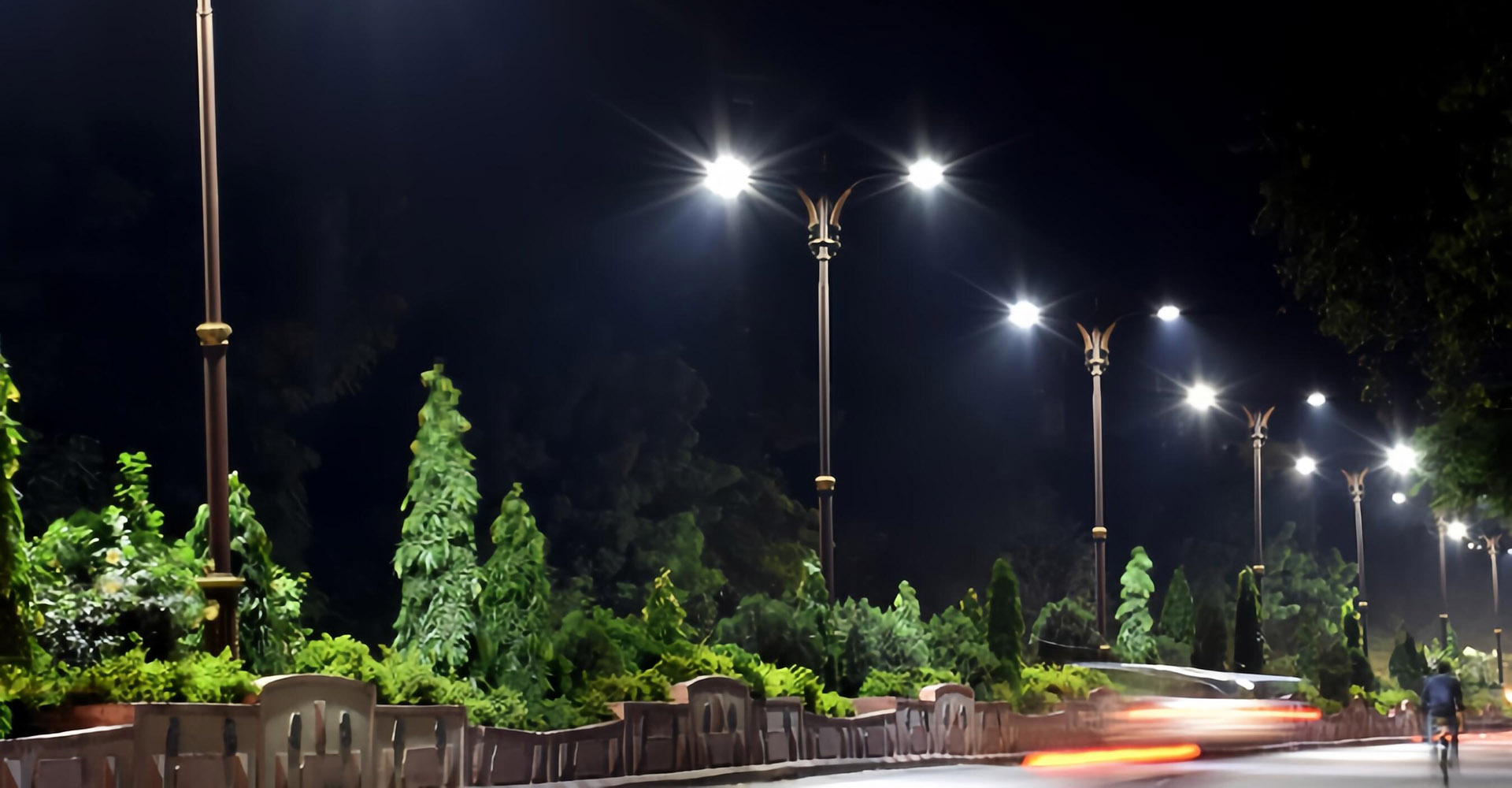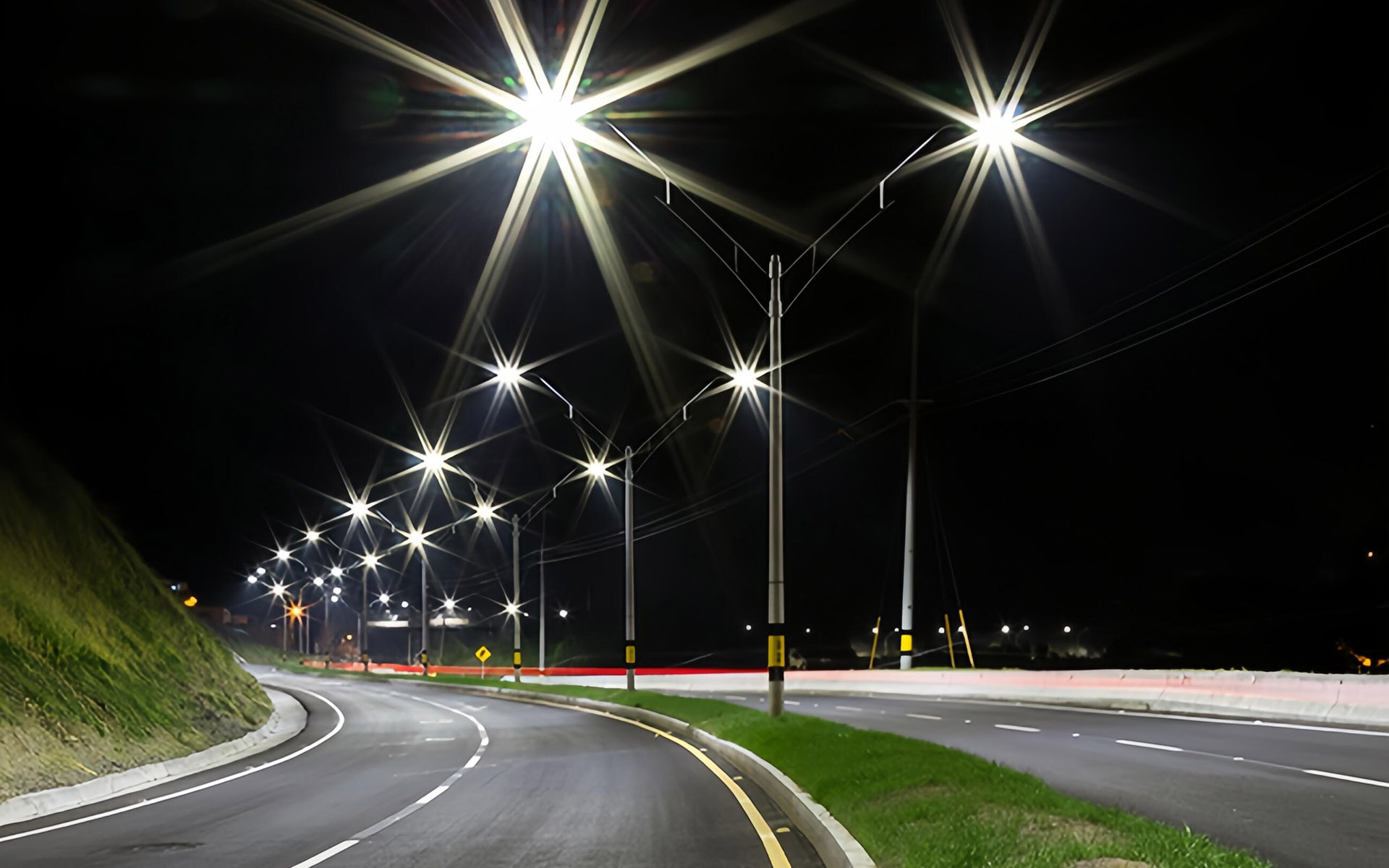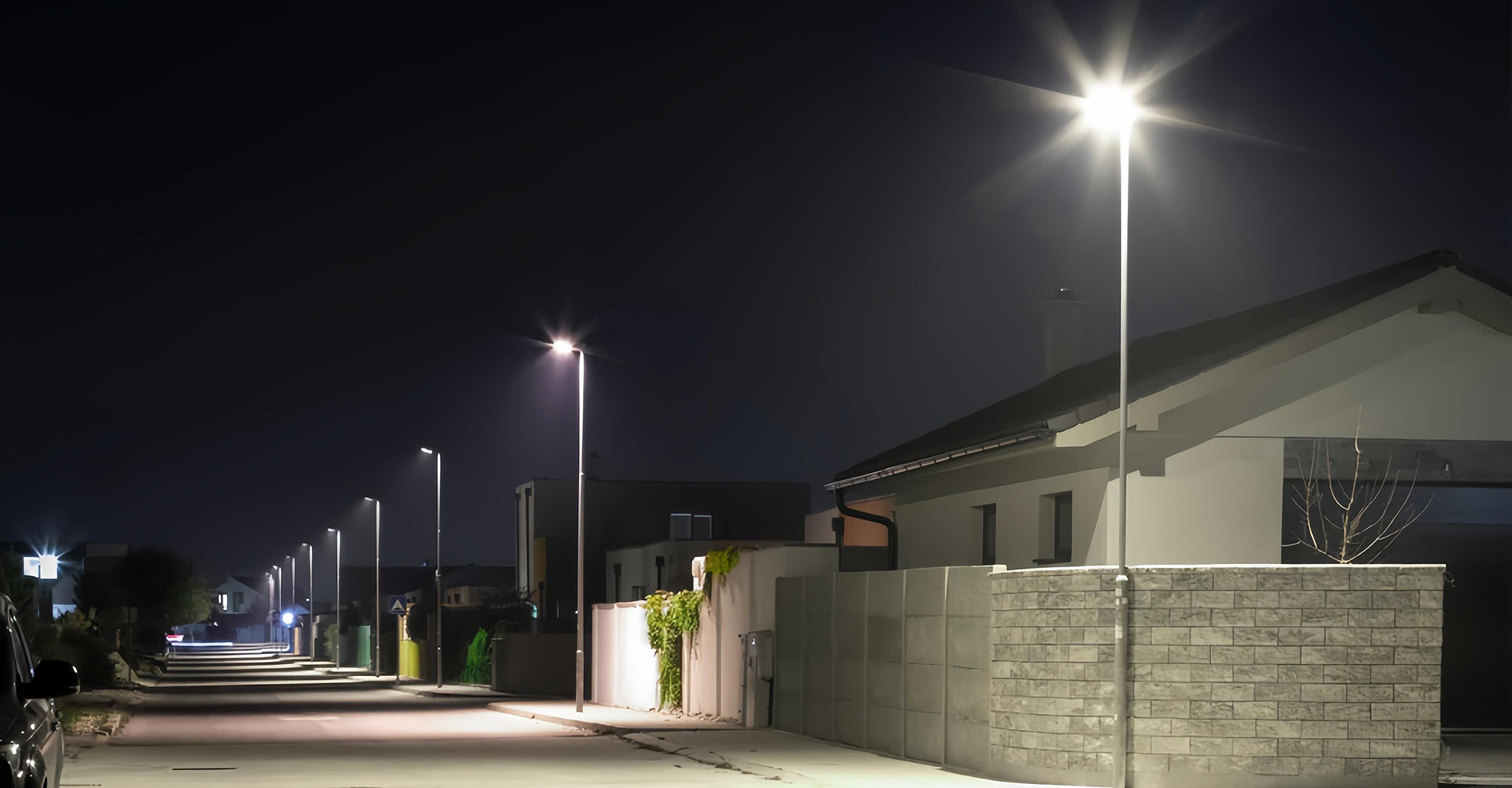
Introduction
Innovations in 100W LED street light technology continue to push the boundaries of urban lighting, from increased energy efficiency and enhanced light quality to adaptive lighting systems that can change based on specific conditions or needs. These advancements are not just about providing light; they are integral components of broader smart city strategies, enhancing urban efficiency and sustainability through technology. As LED components become increasingly miniaturized, they allow for more creative and flexible lighting solutions, making 100W LED street lights suitable for virtually any urban space. This transformative shift underscores the importance of adopting advanced LED technology in current and future urban development projects.
By integrating LED lighting into urban infrastructure, cities are setting new standards for what it means to be a ‘lit’ community in the 21st century. As we delve deeper into the benefits and impacts of these lights, it’s clear that 100W LED street lights are more than just an upgrade—they are a crucial component of forward-thinking city planning strategies.
The Basics of 100W LED Street Lighting
Definition and Technical Specifications
100W LED street lights are high-efficiency lighting solutions used in public spaces to enhance visibility and safety during nighttime. These lights are designed with the latest in LED (Light Emitting Diode) technology, which allows them to provide superior illumination while consuming significantly less energy than traditional lighting options.
The key technical features of 100W LED street lights include:
- Brightness: These lights are capable of producing high lumen output, ensuring clear and bright lighting for streets and pathways.
- Color Temperature: They typically offer a range of color temperatures, from warm yellow to cool white, measured in Kelvin (K). This feature allows for customization according to the specific needs of an area, whether it’s a cozy, welcoming glow or a bright, alert ambiance.
- Efficiency: LED lights convert a larger portion of energy into light, with minimal heat production, making them highly efficient.
- Directionality: LEDs are directional, meaning they focus light exactly where it is needed, reducing light pollution.
Comparison with Traditional Street Lighting
When compared to traditional lighting solutions such as halogen or sodium bulbs, 100W LED street lights are vastly superior in several aspects:
- Energy Efficiency: LED street lights use up to 50% less energy than halogen lamps and about 20% less than sodium lamps. This significant reduction in energy consumption can lead to substantial cost savings for urban municipalities.
- Longevity: LEDs have a longer lifespan, often lasting up to 50,000 hours or more, which is multiple times longer than that of traditional bulbs. This longevity reduces the need for frequent replacements, lowering long-term maintenance costs.
- Maintenance Requirements: Due to their durability and lower degradation over time, 100W LED street lights require less maintenance compared to their traditional counterparts, which are often prone to quicker lumen depreciation and more frequent failures.
Transitioning to 100W LED street lights represents a smarter, more sustainable approach to urban lighting. Not only do they offer superior performance in terms of brightness and energy efficiency, but they also align with modern ecological standards by reducing carbon footprints and enhancing the overall quality of urban living. Cities adopting these LED lighting benefits are setting benchmarks in responsible and efficient city planning.

Benefits of 100W LED Street Lights
Enhanced Public Safety
One of the most significant advantages of 100W LED street lights is their ability to enhance public safety. By providing brighter and more reliable illumination, these lights improve visibility on streets and sidewalks, thereby reducing risks associated with poorly lit areas.
- Impact on Visibility and Night-Time Security: The enhanced luminosity of LED street lights ensures that pedestrians, cyclists, and drivers can see more clearly at night, helping to avoid potential hazards and deter criminal activities.
- Studies or Statistics: Research indicates that areas illuminated by LED street lighting experience lower rates of accidents and crime. For instance, a study in several major cities reported up to a 39% reduction in night-time accidents and a significant decrease in crime rates following the installation of LED street lights.
Energy Efficiency and Cost Savings
The switch to 100W LED street lights also brings substantial energy efficiency and cost savings, making them an economically advantageous choice for urban infrastructure.
- Detailed Analysis of Energy Consumption vs. Traditional Lighting: LED street lights use significantly less power than traditional halogen or sodium vapor lamps. While a typical sodium vapor lamp may consume more than 250 watts, a comparable LED fixture can provide similar or better lighting for just 100 watts.
- Long-Term Financial Benefits for Municipal Budgets: The lower energy consumption of LEDs directly translates into cost savings on utility bills. Additionally, the extended lifespan of LED lights reduces the frequency of replacements and maintenance costs. Municipalities can expect to see a return on investment within a few years of installation, followed by continued savings over the life of the fixtures.
These benefits make 100W LED street lights not only a practical choice for enhancing public safety but also a financially sound investment for cities aiming to optimize their budgets and reduce environmental impact. As urban areas continue to grow and evolve, the adoption of LED lighting solutions like these will be crucial in ensuring the sustainability and safety of our communities.
Environmental Impact
Reduction in Carbon Footprint
The adoption of 100W LED street lights plays a significant role in reducing the carbon footprint of urban areas. This reduction is primarily due to their higher energy efficiency compared to traditional lighting technologies.
- Data on Energy Savings Translated into Environmental Impact: LED lights consume less power for the same amount of light emitted by traditional bulbs, which means they generate less greenhouse gas emissions. For example, replacing traditional street lighting with LEDs can reduce energy use by 40-60%, directly decreasing the amount of carbon dioxide emitted into the atmosphere. Over the lifespan of these lights, this can equate to several tons of carbon saved per light fixture.
Light Pollution and Wildlife
In addition to their benefits in energy conservation and carbon reduction, 100W LED street lights also help mitigate light pollution, a growing concern in many urban environments.
- Effects on Urban Wildlife and Night Skies: Excessive artificial lighting disrupts the natural patterns of wildlife, affecting nocturnal animals’ behavior, migration patterns, and breeding cycles. LED street lights can be designed to emit light at wavelengths less disruptive to wildlife. Moreover, their ability to provide directed lighting reduces skyglow, preserving the darkness of night skies much better than omnidirectional lamps like sodium vapor lights.
Cities implementing LED street lights not only take a step towards energy efficiency but also contribute to a healthier ecosystem by reducing the adverse effects of light pollution. This dual benefit reinforces the importance of transitioning to LED technology in modern urban planning, aligning environmental conservation with technological advancement.

Challenges and Considerations
Installation Challenges
While the benefits of 100W LED street lights are substantial, the installation process can present several challenges. These hurdles are often related to infrastructure and logistics.
- Infrastructure Requirements: Upgrading to LED lighting often requires modifications to existing electrical systems and fixtures. In some cases, older street lighting infrastructure may need significant upgrades or replacements to support the efficient operation of LED technology, which can be a costly and time-consuming endeavor.
- Common Hurdles: Initial installation costs can be high, and the technical requirements for proper installation might require specialized knowledge. There is also the challenge of integrating LED systems with smart technology platforms, which are increasingly common in modern urban lighting systems.
Public Perception and Adaptation
The transition to LED street lighting can also be influenced by public perception and community response.
- Community Response: While most community responses are positive, especially once the benefits are realized, there can be initial resistance due to changes in lighting aesthetics and color temperature. It’s crucial for municipalities to engage with communities early in the planning process, educating residents about the long-term benefits and addressing any concerns they may have.
Regulatory and Policy Framework
Regulatory issues also play a significant role in the deployment of LED street lights.
- Overview of Regulations: Various local, national, and international regulations can affect the implementation of LED street lighting. These may include safety standards, environmental regulations, and energy efficiency mandates. Compliance with standards from bodies like the International Electrotechnical Commission and the American National Standards Institute is often required.
- Policy Support: Many regions offer incentives and support programs to encourage the adoption of energy-efficient LED lighting. Navigating these policies can be complex but essential for securing funding and support for large-scale lighting projects.
Addressing these challenges and considerations requires careful planning and coordination but is essential for ensuring the successful implementation and maximization of the benefits that 100W LED street lights can offer. Engaging with all stakeholders — from government officials and industry experts to the local community — is a critical component of this process, ensuring that the transition not only meets technical and regulatory standards but also aligns with the community’s needs and expectations.
The Future of Urban Lighting
Technological Advancements
As we look towards the future, the evolution of urban lighting technology, especially LED, appears increasingly intertwined with advancements in smart technologies. Innovations in LED technology continue to push the boundaries of what’s possible, from increased energy efficiency and enhanced light quality to adaptive lighting systems that can change based on specific conditions or needs.
- Innovations in LED Technology: Future developments in LED technology may include further improvements in luminous efficacy and color accuracy, as well as the integration of nanomaterials to enhance performance. Moreover, the continued miniaturization of LED components allows for more creative and flexible lighting solutions, making LEDs suitable for virtually any urban space.
- Smart Lighting Systems: LED lights are increasingly being incorporated into smart lighting systems that can autonomously adjust lighting based on environmental conditions, such as traffic density or weather changes, which optimizes energy use and enhances public safety. These systems can also be integrated with other city services for comprehensive urban management.
Integrating with Smart City Initiatives
100W LED street lights are not just standalone units; they are integral components of broader smart city strategies. These initiatives aim to enhance urban efficiency and sustainability through technology, and lighting plays a crucial role in this context.
- Role in Smart Cities: LED street lights can be equipped with sensors and connected to a network that allows city officials to remotely monitor and control lighting systems. This connectivity enables real-time adjustments to lighting levels, reducing energy consumption and maintenance costs while improving safety and urban ambiance.
- Data Collection and Analysis: Beyond illumination, these lights can serve as data collection points that gather valuable information about urban environments, such as air quality and noise levels. This data can be used to inform other aspects of city planning and management, making LED street lights a multipurpose tool in smart city ecosystems.
The integration of 100W LED street lights into smart city initiatives represents a pivotal shift in urban lighting. It’s not just about providing light; it’s about creating intelligent environments that respond dynamically to the needs of the community. As technology progresses, the potential for innovative lighting solutions that contribute to more livable, sustainable, and efficient urban spaces is immense. This transformation underscores the importance of adopting advanced LED technology in current and future urban development projects.

Conclusion
Throughout this exploration of 100W LED street lights, we have illuminated their significant benefits and the pivotal role they play in modern urban planning. These fixtures not only enhance public safety through improved visibility and reduced crime rates but also offer substantial energy savings and environmental benefits by reducing carbon emissions and light pollution. Moreover, the challenges associated with their installation, such as infrastructure upgrades and regulatory compliance, are far outweighed by their long-term advantages.
As urban areas continue to expand and seek sustainable solutions, the potential for future developments in LED street lighting is vast. Innovations may focus on even greater efficiencies, integration with renewable energy sources, and enhancements in smart lighting technologies that allow for real-time environmental responsiveness and connectivity.
If you have any questions about LED street lights, just feel free to contact us directly. Our lighting experts are ready to help.
Get an Instant Quote Now
Let us help you get started with our superior LED lighting products.
Our LED Lighting experts can help to solve your issues.
Before sending your message, please note:
Your message goes to Logos Lighting and it may take time to reply to you.
Please complete all fields unless otherwise indicated. This will help us deal with your inquiry more efficiently. Alternatively, you can contact us directly via email: info@logosled.com.



